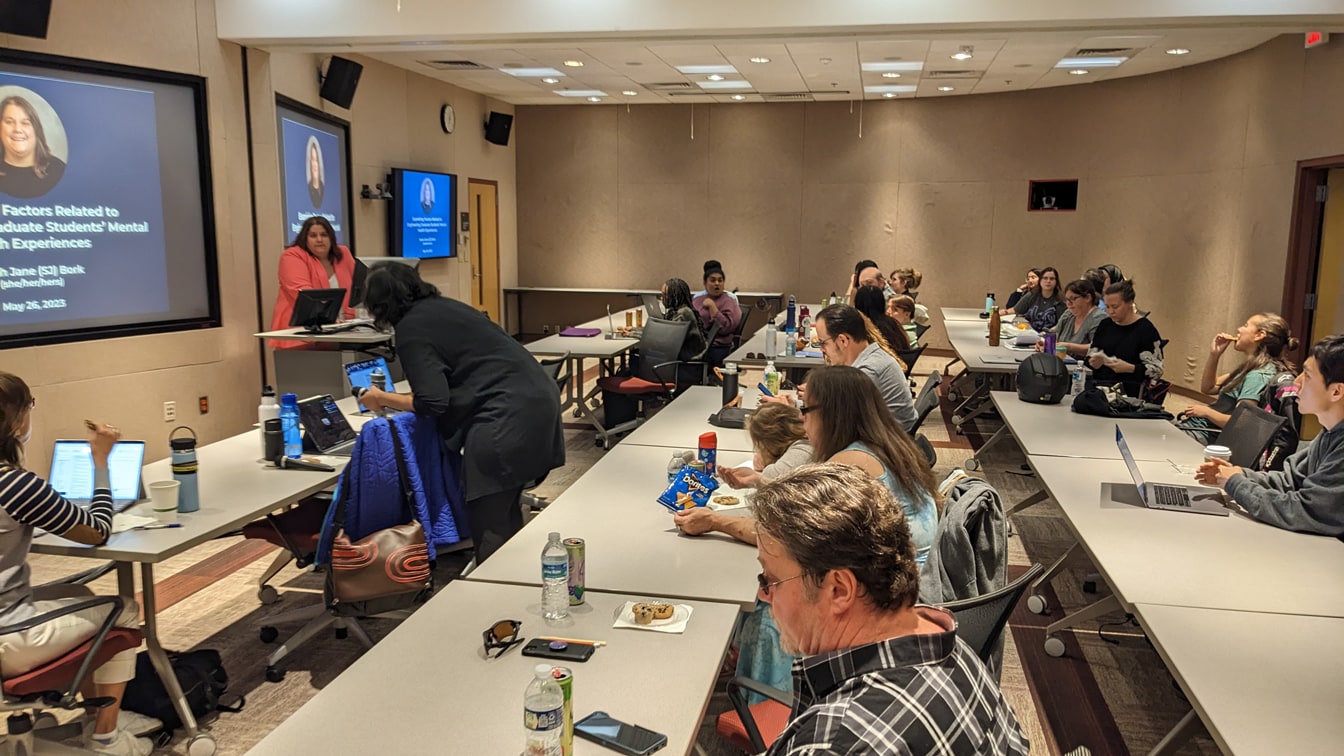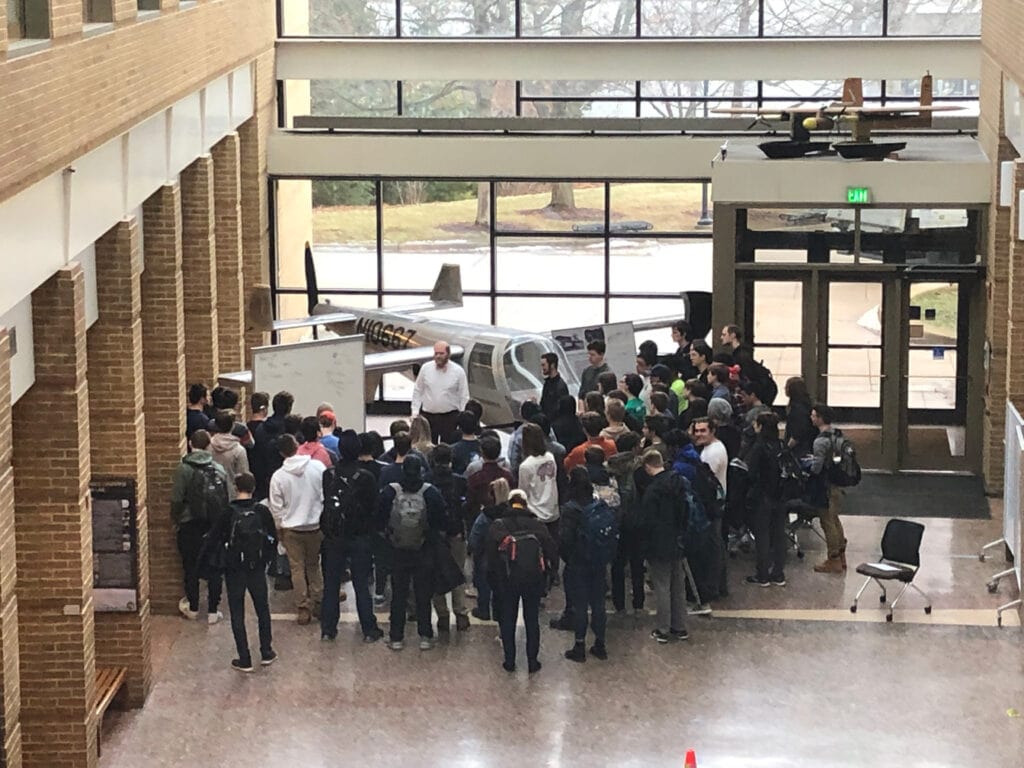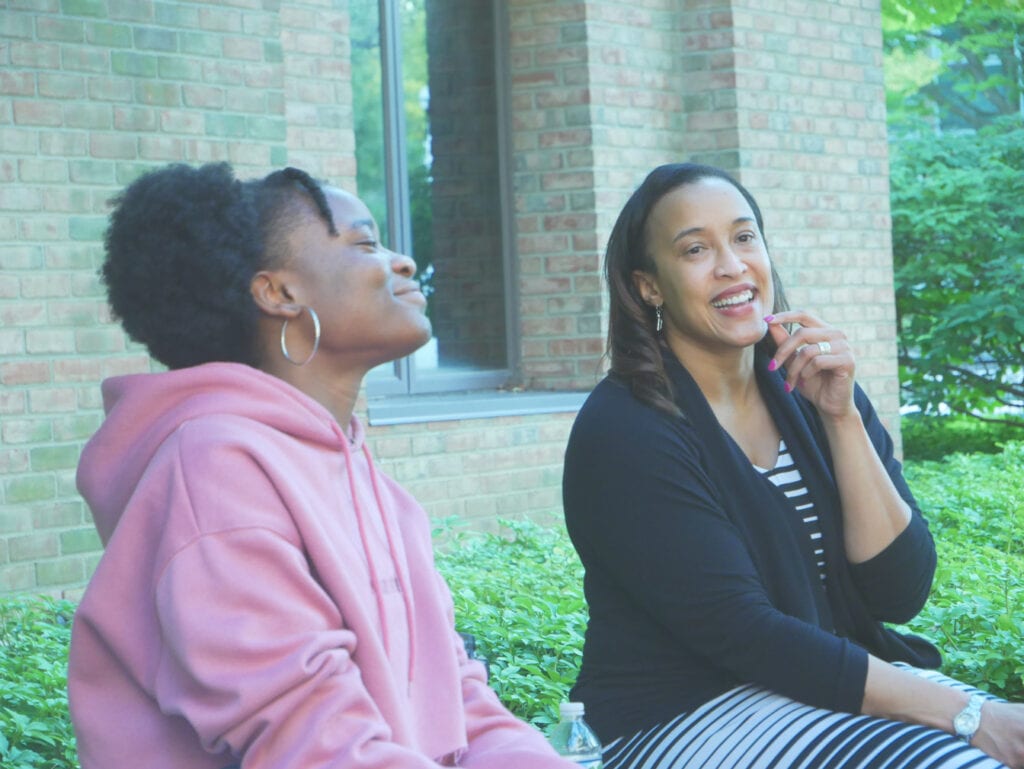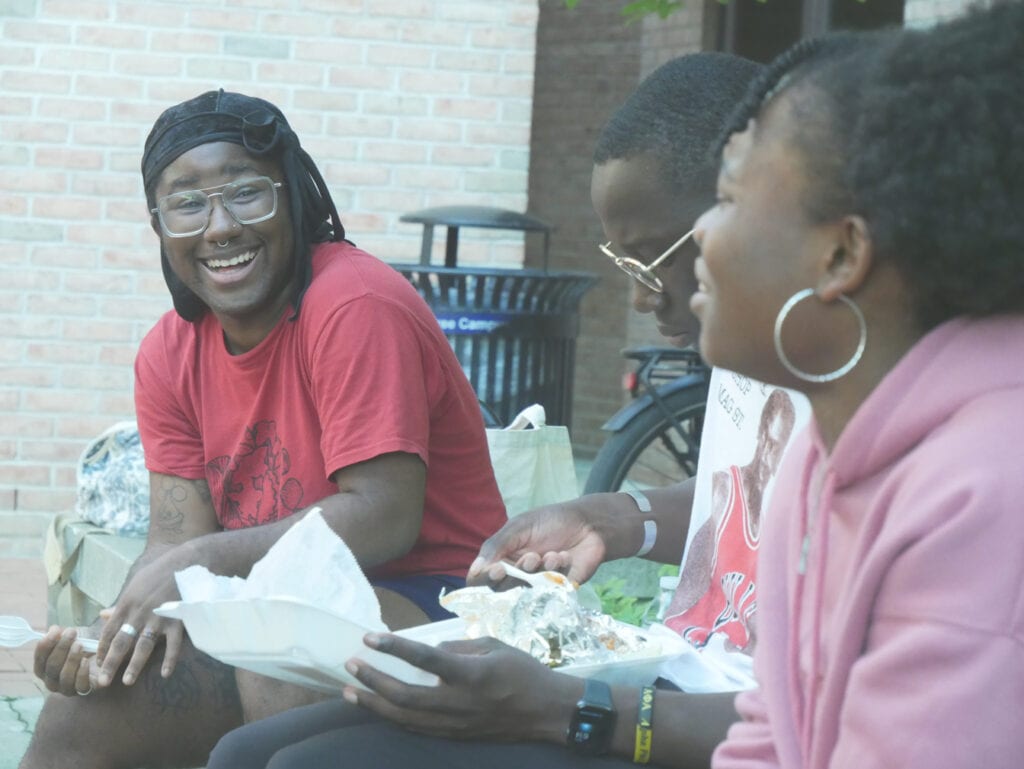
Educating engineers as whole people
Researching education leads the way to a diverse, impactful community of professionals.

Researching education leads the way to a diverse, impactful community of professionals.
Engineering education research (EER) is about more than just making better teachers and improving how students learn technical skills, says Cindy Finelli, director of the University of Michigan’s EER program. It’s about generating data to help make a more inclusive and holistic experience for engineering students overall, setting students up for successful careers by educating the whole person and, in turn, enabling diverse engineers to have a positive impact on society.
“Our research can improve college teaching, sure. But, by prioritizing more than just teaching technical skills, we can expand diversity in engineering, promote students’ health and wellbeing, improve the way we mentor others, help practicing engineers make better design decisions, empower engineers to address ethical and socio-technical concerns in their work, and enable society to better understand what engineering is,” added Finelli, who is also a professor of electrical and computer engineering and education.
Since its launch five years ago, the U-M EER program has grown to include seven core faculty embedded within five of the College of Engineering’s departments and has graduated two PhD students. Like scholars in any field, the core EER faculty have produced new knowledge with real-world impact. Their contributions include developing classroom exercises that help students learn how to tackle realistic problems, launching organizations to informally mentor students and improve their sense of belonging, and identifying solutions to better support neurodivergent students, historically excluded students, and student mental health and wellbeing.
As engineers in the field address the nation’s grand challenges, they need to solve open-ended problems. But, the uncertainty associated with that can make students anxious and uncomfortable, and conventional engineering teaching practices often don’t instruct students how to handle that uncertainty.

“In most basic engineering courses, we are only teaching students how to do plug-and-chug textbook problems,” said Aaron Johnson, an assistant professor of aerospace engineering and core EER faculty member who co-led a research team that studied how students think through open-ended problems. “When students finally get to senior design projects, instructors ask them to solve open-ended problems, but the students haven’t been taught how to do that and haven’t had time to practice that skill.”
Practicing open-ended research more frequently and earlier in students’ academic careers can help students feel more confident in the face of real-world uncertainty, according to the research team’s findings. Johnson’s project with Jessica Swenson, a former U-M EER postdoctoral researcher and current assistant professor at the University at Buffalo, looks at whether students could apply engineering judgments to solve open-ended problems. A separate but related project, co-led by Swenson and Emma Treadway, former U-M mechanical engineering doctoral student and current assistant professor of engineering science at Trinity University, focuses on how students’ feelings change as they tackle open-ended modeling problems that resemble those they’d encounter regularly in the field.
Through their combined research efforts, the team has found that diving into open-ended problems is not an easy feat for many students. Initially, many students felt uncomfortable making their own decisions during modeling exercises and anxious about not having any affirmation of being right or wrong. But, after repeatedly completing open-ended problems, students proved capable of applying engineering judgment and learned how to manage their discomfort and anxiety. Ultimately, the students felt more confident and more like professional engineers.
To facilitate broader, more frequent, and more impactful application of open-ended modeling problems, Johnson and Swenson are building a community of practice to help instructors around the country adopt more effective open-ended problems in their classrooms. Their teaching method is now implemented at nine other colleges and universities, and interest is growing as more instructors realize how the open-ended problems are more rewarding to both students and teachers alike.
When educating prospective engineers as whole people, it is important to understand their needs, mental health and sense of belonging in their degree programs. Collecting data in these areas can help researchers identify and address inequities in engineering programs in order to retain students, especially those who are neurodivergent and from historically excluded groups.
“We need to recognize all students’ strengths in the classroom and ensure that our teaching methods are inclusive and equitable for a diverse group of learners,” said Laura Carroll, U-M’s first EER PhD graduate and current education research and assessment analyst at Colorado School of Mines. “Traditional practices, like long-duration lectures, are not the best ways for many students to learn. Instead, students benefit from evidence-based practices that promote student success.”
Carroll researched how to support students with ADHD, an understudied population, by compiling survey responses from four multi-institutional, first-year student cohorts between 2010 and 2016. From that analysis, Carroll found that students’ adjustment to college academics–including the way they develop study and time management skills–influenced their first-year grades.

Though many students need help developing these skills when they enter college, it may be more challenging for students with ADHD. Carroll recommends that instructors support students’ transition to college academics by providing academic coaching for all students, offering ample opportunities for them to receive feedback on their assignments, and recording lectures for students to review.
Support can be provided to historically excluded students by cultivating their sense of belonging throughout their college careers. Joi Mondisa, an associate professor of industrial and operations engineering and core EER faculty member, studies how self-advocacy, social community, and faculty mentorship practices impact student’s sense of belonging and retention rates. Through her research, Mondisa has found that informal mentoring and community spaces are critical ways for historically excluded students to connect with people from similar backgrounds during their academic careers.
“Students often think that they are the only ones having a particular experience, but when they come together in informal groups with other students or faculty from similar backgrounds, they realize that other people share their experiences,” said Mondisa. “That increases students’ perseverance because they can support each other.”
Mondisa has applied her research findings by designing and running informal mentoring programs, such as BIndx (pronounced bind-ex), an informal mentoring group originally for Black industrial and operations engineers at U-M. BIndex has tripled in size since its inception seven years ago, and it now connects students and faculty from multiple ethnicities and across several engineering disciplines. Building those connections not only helps students feel like they belong, but also improves their self advocacy skills by facilitating the exchange of information on where and how to get the resources they need to be successful or bounce back from setbacks.

“I’ve had a lot of conversations during BIndx meetings where students would ask for help on a class that they are failing,” said Mondisa. “Those conversations and connections wouldn’t have happened without that community space.”
Scholars in EER holistically support students by also studying their mental health and wellbeing. Sarah Jane (SJ) Bork, U-M’s second EER PhD graduate and current assistant professor at the University of Georgia, began researching student mental health to understand her own experiences in engineering. Bork started at U-M in 2017 as an electrical engineering graduate student.

She loved making electronics and being in the clean room, but at the same time, aspects of the graduate school culture had a negative impact on her mental health. Bork heard of similar stories from other graduate students at U-M and elsewhere, and she wanted to better understand what was going on.
“PhDs have a 50% attrition rate on average,” said Bork. “Why is this happening to so many people, and what can we do about it?”
To answer these questions, Bork transferred from the electrical engineering program to pursue a PhD in EER in 2019.
For her thesis research, Bork first analyzed data collected by the Healthy Minds Study, an annual survey of student mental health across 140 campuses. She benchmarked trends in graduate student health and examined various factors related to these measures, finding that in science, engineering, and mathematics, graduate students’ perceptions of campus culture and mental health have been declining since 2018.
To dive more deeply into students’ lived experiences, Bork conducted a photovoice study in which she asked eight engineering graduate students to describe their mental health experiences using images–either found online or produced themselves–along with text captions. The participants then talked about their experiences through their images in one-on-one interviews followed by a focus group discussion.
Through her study, Bork found that many photovoice participants viewed the engineering culture around mental and emotional health as a major barrier to their academic success. Some noted that feeling overwhelmed and unsure throughout their degree program was a major source of distress, while others shared that they were worried about completing their work, and that made it difficult to fully separate their academic work from other parts of their life.
Some participants expressed feeling guilty when taking time off because their anxieties were compounded with their perceptions of their colleagues’ work ethic. By asking the students to speak through their images, Bork made open and honest discussion of a stigmatized subject less daunting, which in turn allowed the participants to collectively identify their shared mental health experiences from graduate school and her to better understand the cause of those experiences.
“Engineering programs create an environment with expectations of rigor and an assumption that you’re going to struggle,” said Bork. “But, are the concepts too difficult for students, or is it the fact that students feel isolated within their studies and overwhelmed from a seemingly constant competition with their peers?”
Through these featured projects and other research on teaching and learning, pre-college engineering education, design and creativity, computing education research, engineering career pathways, and more, U-M’s EER program has cultivated extensive expertise and is now being recognized beyond U-M.
“Other universities are creating engineering education research programs based on our Michigan model, and there’s been talk about creating similar programs in chemistry or physics,” said Finelli. “I think that’s pretty exciting. We’ve accomplished so much in just five years, and we are positioned to achieve even more!”